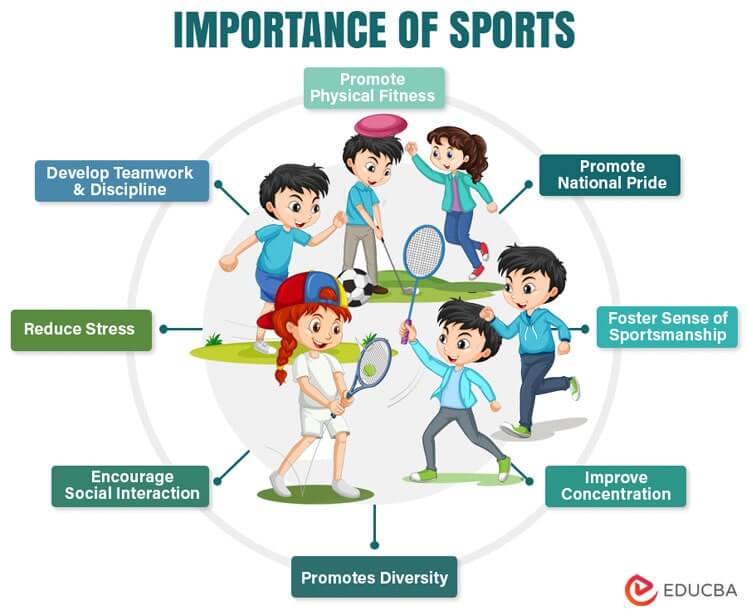Lifetime Sports: Understanding the Definition, Benefits, and Impact on Our Lives

Introduction: What Are Lifetime Sports?
Lifetime Sports In today’s fast-paced world, where the emphasis is often placed on competition and winning, there is a category of sports that stands out for its longevity, inclusivity, and adaptability. These are the so-called “lifetime sports.” But what exactly do we mean by lifetime sports, and why are they so important?
At its core, lifetime sports are activities that people can engage in throughout their entire lives. Unlike more traditional sports, which often require peak physical performance and are most commonly played in youth or adulthood, lifetime sports can be practiced well into one’s later years. These sports focus more on individual participation and less on competition, making them accessible for individuals of all ages, abilities, and fitness levels. Whether it’s a low-impact sport like swimming or something more socially engaging like tennis, lifetime sports are designed to keep us active, healthy, and engaged throughout our lives.
But there’s much more to these activities than just the physical aspect. Lifetime sports often become part of a person’s lifestyle, offering opportunities for mental health benefits, social engagement, and overall well-being. In this article, we’ll dive deeper into the concept of lifetime sports, explore their many benefits, and highlight some examples that could be easily incorporated into your life.
What Defines a Lifetime Sport?
When we talk about a lifetime sport, we are discussing a sport that is not confined by age or physical condition. The distinguishing factor is its sustainability over the long term. Unlike high-intensity sports that demand a peak performance period (such as football or basketball), lifetime sports can be played in a relaxed and non-competitive way, making them suitable for anyone at any age.
One important definition to remember is that lifetime sports are typically low-impact activities, meaning they place minimal stress on the joints and bones. This makes them ideal for individuals of all ages, from children to seniors. A lifetime sport might also be one that can be played solo, in pairs, or groups, offering versatility and the ability to engage socially while maintaining physical fitness.
A key characteristic of lifetime sports is their adaptability. Many of these sports can be easily modified to suit different fitness levels and abilities. For example, while a marathon might be too grueling for someone in their sixties, a brisk walk or a short jog can still provide similar health benefits without causing harm.
Examples of Lifetime Sports
When you think about lifetime sports, there are a few that immediately come to mind. These are activities that are well-loved by people of all ages and that continue to offer physical and mental benefits as participants grow older. Let’s look at some popular examples.
Swimming
Arguably one of the best lifetime sports, swimming is a full-body workout that engages nearly every muscle group. Its low-impact nature makes it perfect for individuals with joint issues or arthritis. Whether you’re swimming laps in the pool, participating in water aerobics, or simply enjoying a leisurely swim, the cardiovascular benefits are immense. As you age, the buoyancy of water helps support your body, making swimming a great option for those who want to stay active but avoid injury.
Tennis
Tennis is another sport that can be enjoyed throughout a lifetime. While it can be competitive at higher levels, it’s also possible to play at a relaxed pace, whether it’s singles or doubles. Tennis has the advantage of improving coordination, balance, and mental agility, which is crucial as we age. It also offers social opportunities, as tennis is often played in clubs or with friends.
Golf
Golf is another classic lifetime sport that is ideal for all ages. The sport involves walking, carrying clubs, and making strategic decisions, making it excellent for maintaining both physical and mental fitness. What makes golf particularly suited to lifetime participation is that it doesn’t require running or high-impact movements, making it gentle on the body. The social aspect is also a huge draw, with golf courses often being venues for socialization and networking.
Cycling
Cycling, whether outdoors or indoors on a stationary bike, offers cardiovascular benefits, strength-building, and improved endurance. It’s also gentle on the joints, making it an excellent activity for seniors. Cycling allows you to explore the world around you while still giving you the benefits of exercise. For individuals who find running difficult due to knee pain or other joint issues, cycling can be a perfect alternative.
Walking and Hiking
One of the simplest and most accessible lifetime sports is walking. It’s low-impact, requires no special skills, and can be done anywhere—from city streets to nature trails. For those who seek more of a challenge, hiking provides an opportunity to engage with nature while getting a workout. Hiking trails vary in difficulty, so there’s something for everyone, regardless of age or fitness level.
Health Benefits of Lifetime Sports
Participating in lifetime sports isn’t just about staying active; it’s about taking care of both your physical and mental health. These sports offer a range of health benefits that can significantly improve your quality of life as you age.
Physical Health Benefits
Regular participation in lifetime sports can help reduce the risk of chronic illnesses such as heart disease, diabetes, and obesity. Low-impact sports, in particular, are excellent for individuals who may have issues with mobility or arthritis. These activities improve joint health, flexibility, and overall muscle strength, making them key to maintaining an active lifestyle as you age. Engaging in sports like swimming or cycling regularly can also help you maintain a healthy weight, improve cardiovascular fitness, and strengthen bones.
Mental Health and Cognitive Benefits
The mental health benefits of lifetime sports are profound. Physical exercise has long been linked to better mental health, and this applies to all age groups. These activities reduce stress, anxiety, and depression, promoting the release of endorphins (the “feel-good” hormones). Sports that involve coordination and strategy, such as tennis or golf, help improve cognitive function, memory, and decision-making skills.
The social element of many lifetime sports also plays a big role in mental well-being. Engaging in activities with others helps foster a sense of community and belonging, which can improve emotional health and prevent feelings of isolation, particularly in older adults.
Social Connections Through Lifetime Sports
One of the most overlooked benefits of lifetime sports is the opportunity they offer for socializing and building relationships. Many of these sports are played in group settings or pairs, allowing individuals to meet new people and strengthen bonds with friends and family. This social aspect is particularly important for older adults who may experience loneliness and isolation.
Tennis, golf, swimming in a local pool, and even walking in a park all offer opportunities to meet others with similar interests. These social connections not only provide emotional support but also encourage participants to stay engaged in regular activities. Whether it’s forming a walking group or joining a tennis league, these sports offer a sense of belonging and motivation to continue participating.

How to Get Started with Lifetime Sports
For those interested in trying out lifetime sports, the best approach is to start slow and gradually increase intensity. Many of these sports don’t require much upfront investment in equipment, and they can often be done solo or with minimal setup.
For example, if you’re interested in swimming, all you need is access to a pool and comfortable swimwear. If cycling is more your style, a basic bike and helmet are enough to get started. Tennis can be enjoyed at a local court, and golf often requires minimal membership fees at local clubs.
It’s important to choose a sport that aligns with your interests and abilities. If you enjoy nature, hiking may be the best fit, while those who love a bit of friendly competition may enjoy tennis or golf. Starting with something simple and enjoyable will increase your chances of sticking with it over the long term.
Challenges and Considerations
While lifetime sports offer numerous benefits, it’s important to be mindful of a few potential challenges. As we age, certain conditions such as arthritis, joint pain, or mobility issues may limit some people’s ability to fully participate in certain activities. In these cases, it’s important to consult with a healthcare provider to determine which sports are most suitable.
Additionally, some lifetime sports, such as golf or tennis, may require access to specific venues or equipment, which could be costly. Fortunately, many public parks offer tennis courts, walking paths, and outdoor spaces where people can engage in these activities at little or no cost.
Conclusion: The Lasting Impact of Lifetime Sports
Lifetime sports are more than just activities to pass the time—they are a pathway to long-term health, happiness, and well-being. By offering both physical and mental health benefits, these sports enable individuals to stay active and engaged throughout their lives. Whether it’s swimming, tennis, golf, cycling, or even something as simple as walking, lifetime sports provide a sustainable way to maintain a healthy lifestyle at any age.
By embracing these activities, we can reduce the risks of chronic diseases, improve our mental health, and foster social connections that keep us engaged with others. No matter where you are in life, it’s never too late to start participating in lifetime sports. All it takes is a willingness to try something new and a commitment to living a healthy, active life.
As we move forward into the future, let’s make sure to prioritize activities that not only keep us fit but also enhance our overall quality of life, helping us stay active and engaged for years to come. So, what are you waiting for? It’s time to pick up that tennis racket, dust off your bicycle, or take a walk in the park—and enjoy the many benefits that lifetime sports have to offer!





